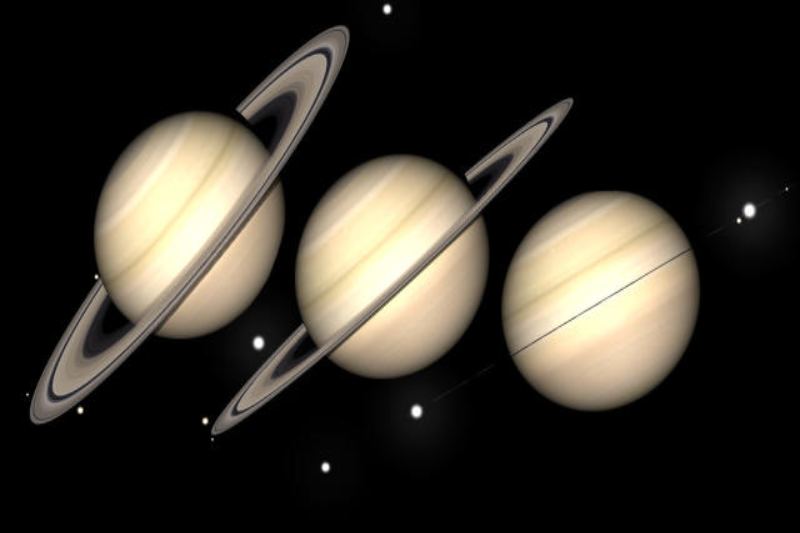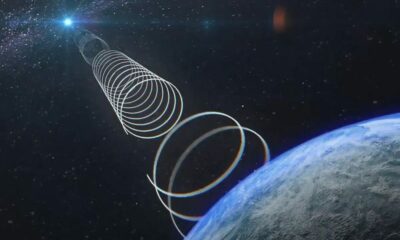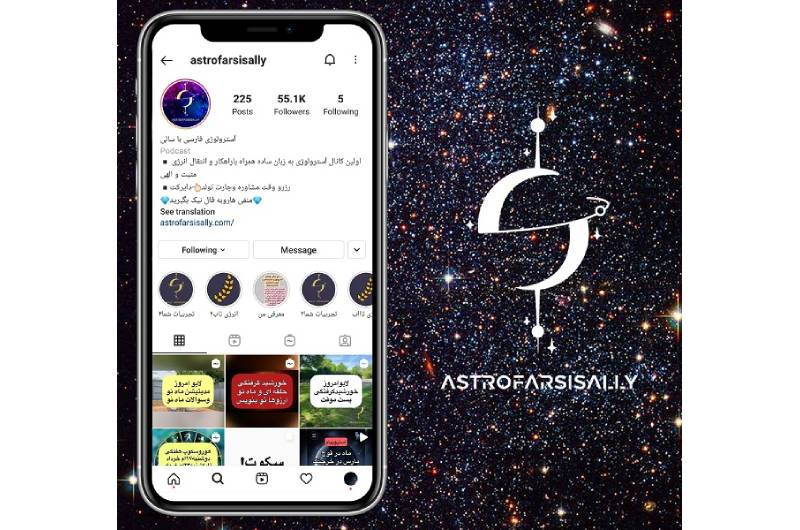Science
Within two years, Saturn’s rings will ‘disappear’

Over the next 300,000 years, Saturn’s exquisite ring system will vanish entirely, but for the next two years, a comparatively uncommon celestial event will give us a sneak peek.
One of nature’s wonders is the planet that is sixth from the Sun. It is not only the “Moon King” of the solar system today, but its enormous, brilliant rings have mesmerized humans for ages.
NASA spacecraft such as Cassini, Pioneer 11, and the Voyager probes provided breathtaking detail of Saturn’s rings. They have also been imaged by Hubble and JWST telescopes. On a clear night, though, anyone with a small backyard telescope or even a pair of binoculars can see them.
That will, however, alter as March 2025 draws near. Over the next fifteen months, the magnificent rings will progressively disappear from view.
You see, Saturn has an axis tilt, just like Earth does. It thus experiences seasons as it revolves around the solar system, with the northern hemisphere facing more directly toward the Sun for half of the trip and the southern hemisphere facing more directly toward the Sun for the remaining portion. The planet’s rings have the same pattern because they are in line with Saturn’s equator.
On Saturn, the northern summer started in May 2017. The ringed planet’s summer has faded in the years since, and during the next fifteen months, it will be getting closer to its northern fall equinox.
At that point, the planet’s rings appear to disappear, causing those of us on Earth to witness a “ring-crossing event.”
Of course, the rings won’t be gone entirely. It’s just that you’re looking at them from the outside. From our vantage point, the rings will be invisible because they are only about one kilometer thick in comparison to Saturn’s 108,728 km polar diameter.
Turning points in the past and future
A few of these ring-crossing events may group together as a result of the relative motions of Saturn and Earth around the Sun. observed this in the middle of the 1990s, during the ring-crossings that occurred in May 1995, August 1995, and February 1996.
However, ring-crossings are relatively uncommon events between these clusters.
September 2009, more than 14 years ago, was the last one. The next one after March 2025 won’t be visible until October 2038, at which point another cluster will begin, with follow-up events taking place in April and July of 2039.
-

 Sports4 weeks ago
Sports4 weeks agoAl Ahly vs Inter Miami, 2025 FIFA Club World Cup – Preview, Prediction, Predicted Lineups and How to Watch
-
Health3 weeks ago
Back to Roots: Ayurveda Offers Natural Cure for Common Hair Woes
-

 Tech3 weeks ago
Tech3 weeks agoFrom Soil to Silicon: The Rise of Agriculture AI and Drone Innovations in 2025
-

 Startup4 weeks ago
Startup4 weeks agoHow Instagram Is Driving Global Social Media Marketing Trends
-

 Sports3 weeks ago
Sports3 weeks agoFIBA 3×3 World Cup 2025: Full Schedule, Preview, and How to Watch
-

 Science4 days ago
Science4 days agoJuly Full Moon 2025: Everything You Should Need to Know, When and Where to See Buck Moon
-

 Gadget3 weeks ago
Gadget3 weeks agoThings to Know about Samsung Galaxy S26: What’s New and What’s Next
-

 Sports4 weeks ago
Sports4 weeks agoWorld Judo Championships 2025: Full Schedule, Date, Time, Key Athletes and How to Watch




















